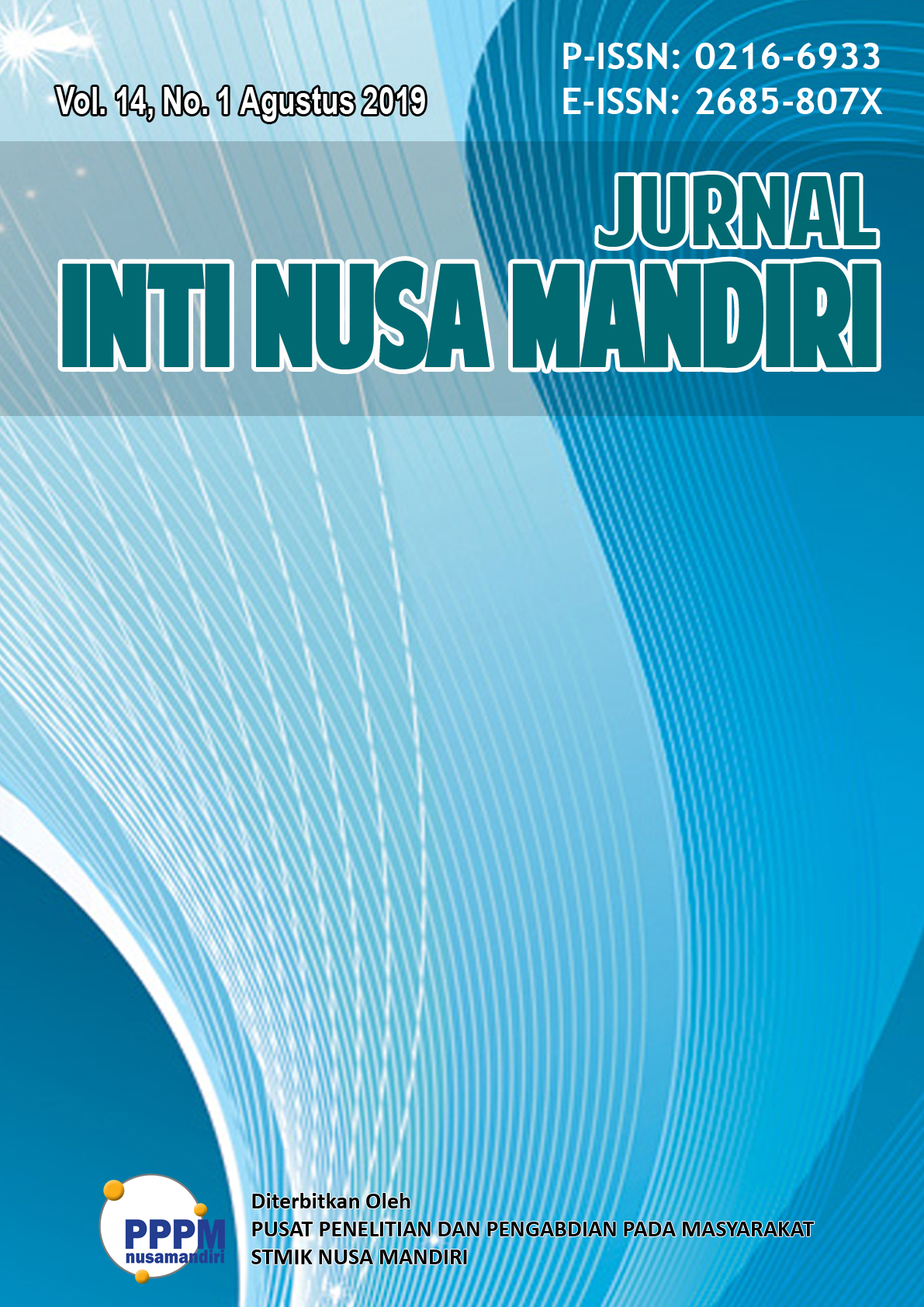RANCANG BANGUN SISTEM INFORMASI PENJUALAN PADA PT. PICOTEL NUSANTARA MENGGUNAKAN METODE WATERFALL
Keywords:
Waterfall Model, Design of Sales, Information SystemAbstract
Repeater Sales Information System is a management information system that produces various information that can be useful to support sales activities at PT. Picotel Nusantara. The manifestation of the development of the Repeater's sales information system is the making of computer applications that are able to represent the whole designed information system. Produced sales information system applications are able to manage sales data, which includes sales transactions, cash receipt transactions, item data, data purchase orders, account data, and customer data in an organized manner, and produce complete, accurate and always current reports for each level of management . In writing this final assignment, the author uses the waterfall methodology, in this method there are several stages, namely the survey stage, the system design stage, the coding stage, the testing stage, the maintenance stage. From the method that I use, the authors build applications that can be used for the sales process, as well as promotions to customers, so that this application can be expected to be implemented by PT. Picotel Nusantara. The information system approach method used in this information system uses object-oriented methods (object oriented) which emphasize problem solving software based on objects. The system design uses Java and the database design uses MySql Server. The results of the design of sales information system applications show that the role of computer applications in information systems is very important as a support in improving the quality of sales and service activities in the company environment.
Downloads
References
Batubara, H. (2013). PENENTUAN HARGA POKOK PRODUKSI BERDASARKAN METODE FULL COSTING PADA PEMBUATAN ETALASE KACA DAN ALUMUNIUM DI UD. ISTANA ALUMUNIUM MANADO. Jurnal EMBA, 1(2), 217–224. Retrieved from https://ejournal.unsrat.ac.id/index.php/emba/article/view/2073/1646
Frieyadie, F. (2014). WEB SISTEM INFORMASI BERBASIS W2000 UNTUK DUKUNGAN PEMESANAN DAN PENJUALAN PRODUK SAFETY. Jurnal Pilar Nusa Mandiri, 10(1), 111–115. Retrieved from http://ejournal.nusamandiri.ac.id/ejurnal/index.php/pilar/article/view/366
Galih, L., Siahaan, E. D. S., & Elizabeth, K. (2011). Pengujian Web Stress Test Menggunakan WAPT. Retrieved from https://www.kompasiana.com/newbie.holic/55007020a33311c271510c3a/pengujian-web-stress-test-menggunakan-wapt
Hartono, A., Rostianingsih, S., & Setiabudi, D. H. (2015). Perancangan dan Pembuatan Sistem Informasi Administrasi pada Toko Gypsum Mulia Jaya. Jurnal Infra, 3(1).
Indah, I. N. (2013). PEMBUATAN SISTEM INFORMASI PENJUALAN PADA TOKO SEHAT JAYA ELEKTRONIK PACITAN. Indonesian Jurnal on Computer Science - Speed (IJCSS), 10(2), 124–128. https://doi.org/http://dx.doi.org/10.3112/speed.v12i1.1147
OKTAVIANUS, R. (2011). ANALISIS DAN IMPLEMENTASI SISTEM INFORMASI PENJUALAN PADA PD. CITRA KOMPUTER PONTIANAK. SISFOTENIKA, 1(1), 27–36.
Pressman, R. S. (2010). Software Engineering : A Practicioner’s Approach, 7th Edition. New York: McGraw-Hill Inc.
Rusdi, I., Mulyani, A. S., & Safitri, A. S. (2019). Laporan Akhir Penelitian Mandiri. Jakarta.
Sukamto, R. A., & Salahudin, M. (2013). Rekayasa Perangkat Lunak Terstruktur dan Berorientasi Objek. Bandung: Informatika Bandung.
Downloads
Published
How to Cite
Issue
Section
License
Penulis yang menerbitkan jurnal ini menyetujui ketentuan berikut:
1. Penulis memegang hak cipta dan memberikan hak jurnal mengenai publikasi pertama dengan karya yang dilisensikan secara bersamaan di bawah Creative Commons Attribution 4.0 International License. yang memungkinkan orang lain untuk berbagi karya dengan pengakuan atas karya penulis dan publikasi awal pada jurnal.
2. Penulis dapat memasukkan pengaturan kontrak tambahan yang terpisah untuk distribusi non-eksklusif dari versi jurnal yang diterbitkan (misalnya, mengirimkannya ke repositori institusional atau menerbitkannya dalam sebuah buku), dengan pengakuan atas publikasi awalnya pada Jurnal.
3. Penulis diizinkan dan didorong untuk memposting karya mereka secara online (misalnya, dalam penyimpanan institusional atau di situs web mereka) sebelum dan selama proses pengiriman, karena hal itu dapat menghasilkan pertukaran yang produktif, serta kutipan dari karya yang diterbitkan sebelumnya.











